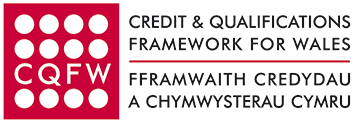| 1. |
Understand the purpose of professional supervision in health and social care or children and young people’s work settings. |
|
| 1.1 | Analyse the principles, scope and purpose of professional supervision
| | 1.2 | Outline theories and models of professional supervision
| | 1.3 | Explain how the requirements of legislation, codes of practice and agreed ways of working influence professional supervision
| | 1.4 | Explain how findings from research, critical reviews and inquiries can be used within professional supervision
| | 1.5 | Explain how professional supervision can protect the:
• Individual
• Supervisor
• Supervisee |
|
| 2. |
Understand how the principles of professional supervision can be used to inform performance management in health and social care or children and young people’s work settings. |
|
| 2.1 | Explain the performance management cycle
| | 2.2 | Analyse how professional supervision supports performance
| | 2.3 | Analyse how performance indicators can be used to measure practice |
|
| 3. |
Be able to undertake the preparation for professional supervision with supervisees in health and social care or children and young people’s work settings. |
|
| 3.1 | Explain factors which result in a power imbalance in professional supervision
| | 3.2 | Explain how to address power imbalance in own supervision practice
| | 3.3 | Agree with supervisee confidentiality, boundaries, roles and accountability within the professional supervision process
| | 3.4 | Agree with supervisee the frequency and location of professional supervision
| | 3.5 | Agree with supervisee sources of evidence that can be used to inform professional supervision
| | 3.6 | Agree with supervisee actions to be taken in preparation for professional supervision |
|
| 4. |
Be able to provide professional supervision in health and social care or children and young people’s work settings. |
|
| 4.1 | Support supervisees to reflect on their practice
| | 4.2 | Provide positive feedback about the achievements of the supervisee
| | 4.3 | Provide constructive feedback that can be used to improve performance
| | 4.4 | Support supervisees to identify their own development needs
| | 4.5 | Review and revise professional supervision targets to meet the identified objectives of the work setting
| | 4.6 | Support supervisees to explore different methods of addressing challenging situations
| | 4.7 | Record agreed supervision decisions |
|
| 5. |
Be able to manage conflict situations during professional supervision in health and social care or children and young people’s work settings |
|
| 5.1 | Give examples from own practice of managing conflict situations within professional supervision
| | 5.2 | Reflect on own practice in managing conflict situations experienced during professional supervision process |
|
| 6. |
Be able to evaluate own practice when conducting professional supervision in health and social care or children and young people’s work settings |
|
| 6.1 | Gather feedback from supervisee/s on own approach to supervision process
| | 6.2 | Adapt approaches to own professional supervision in light of feedback from supervisees and others |
|
